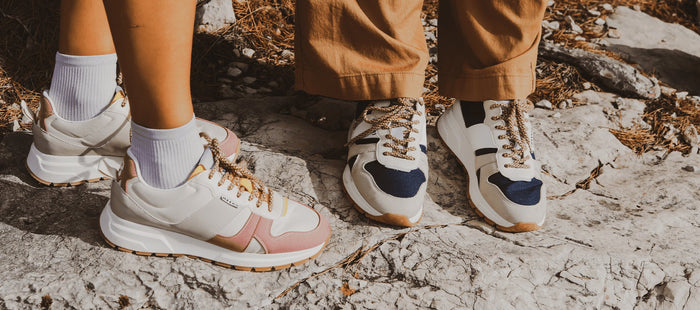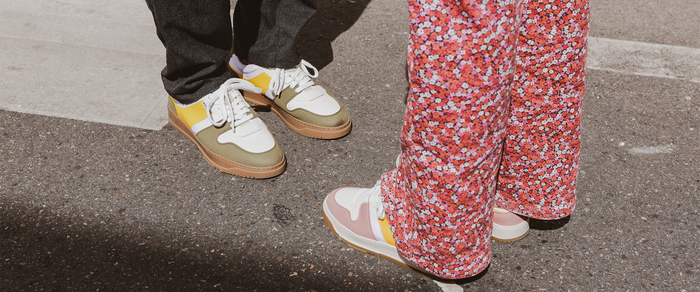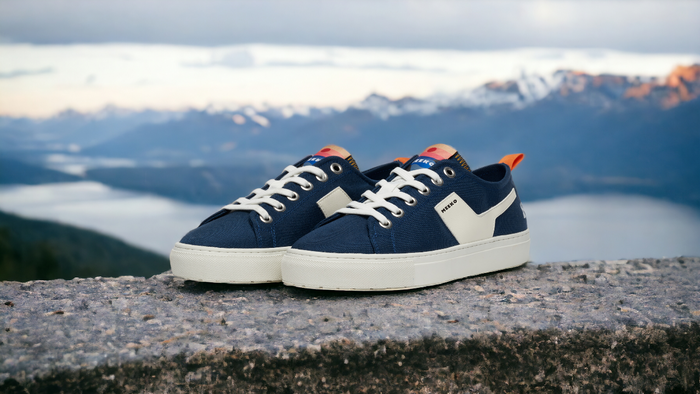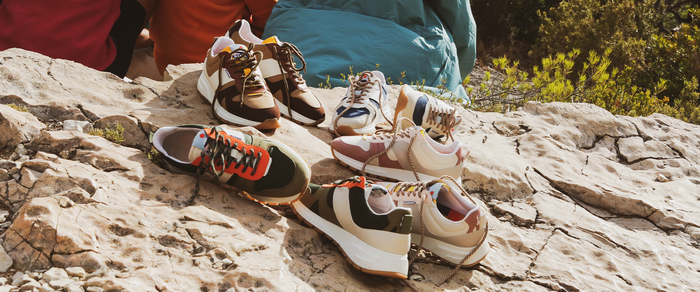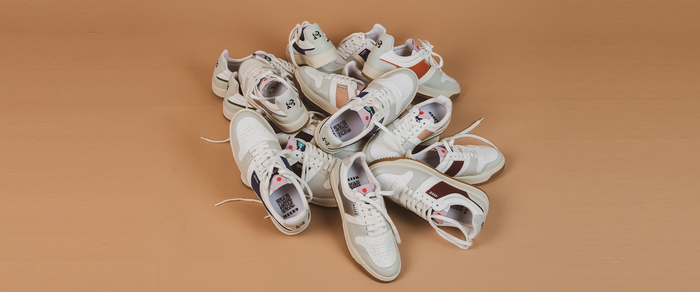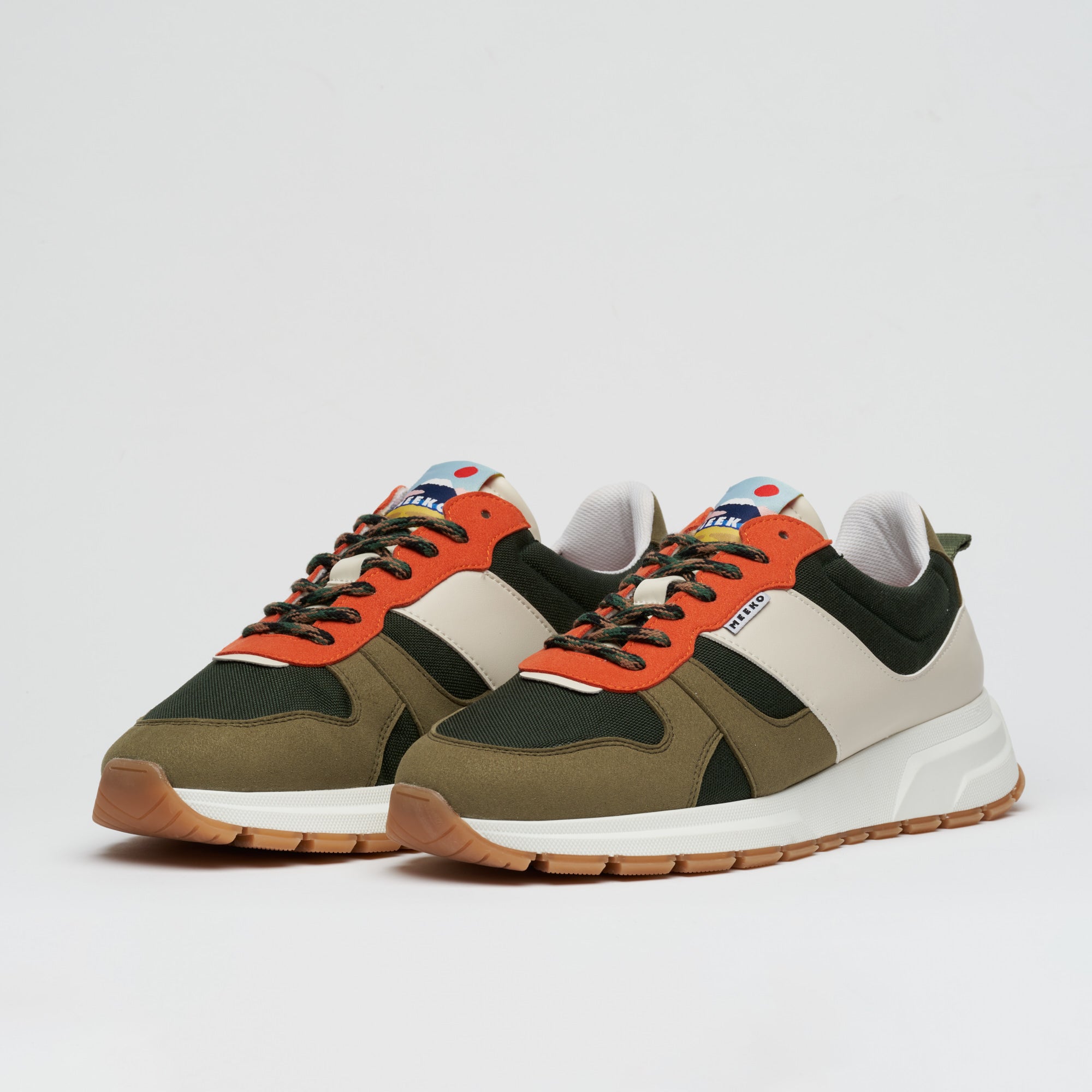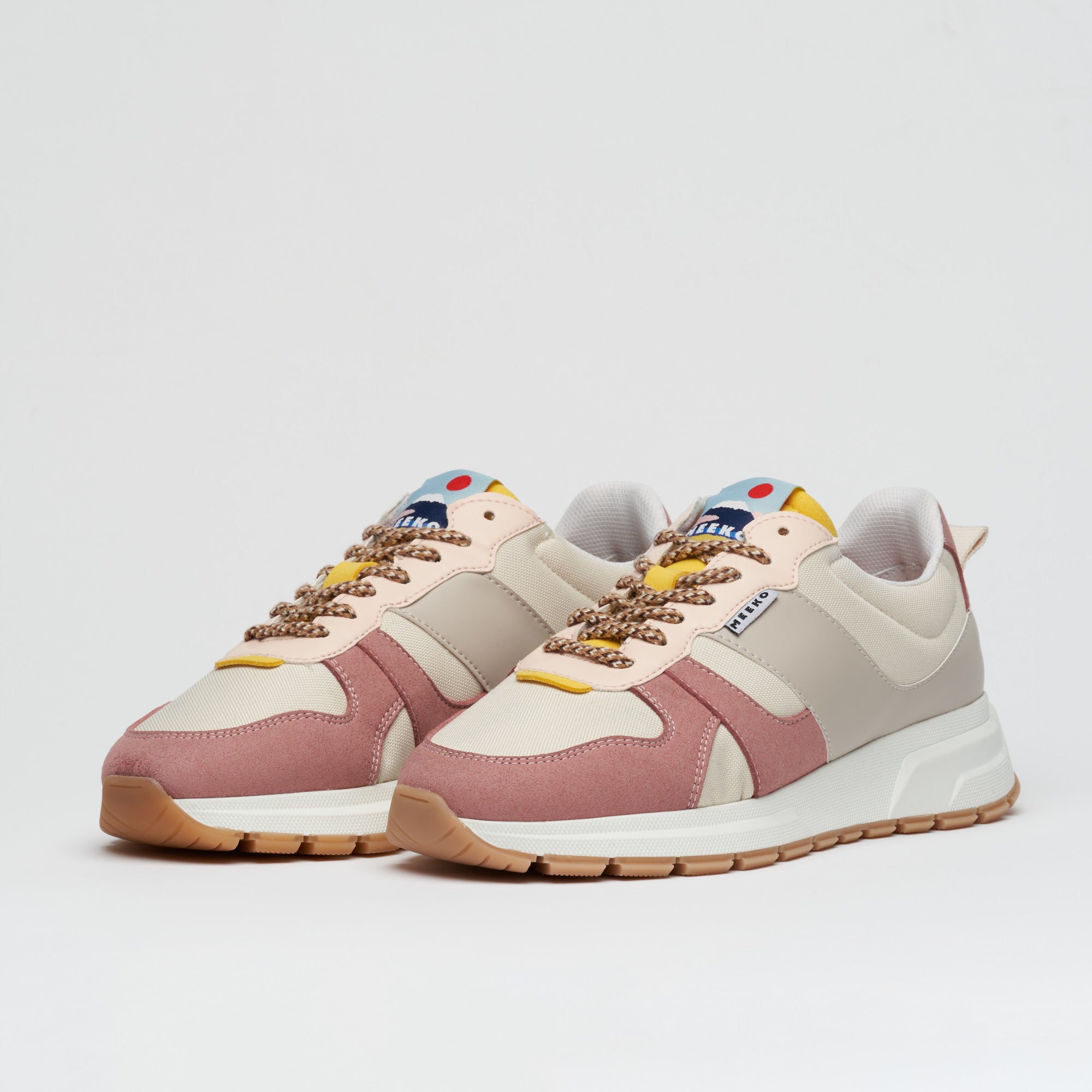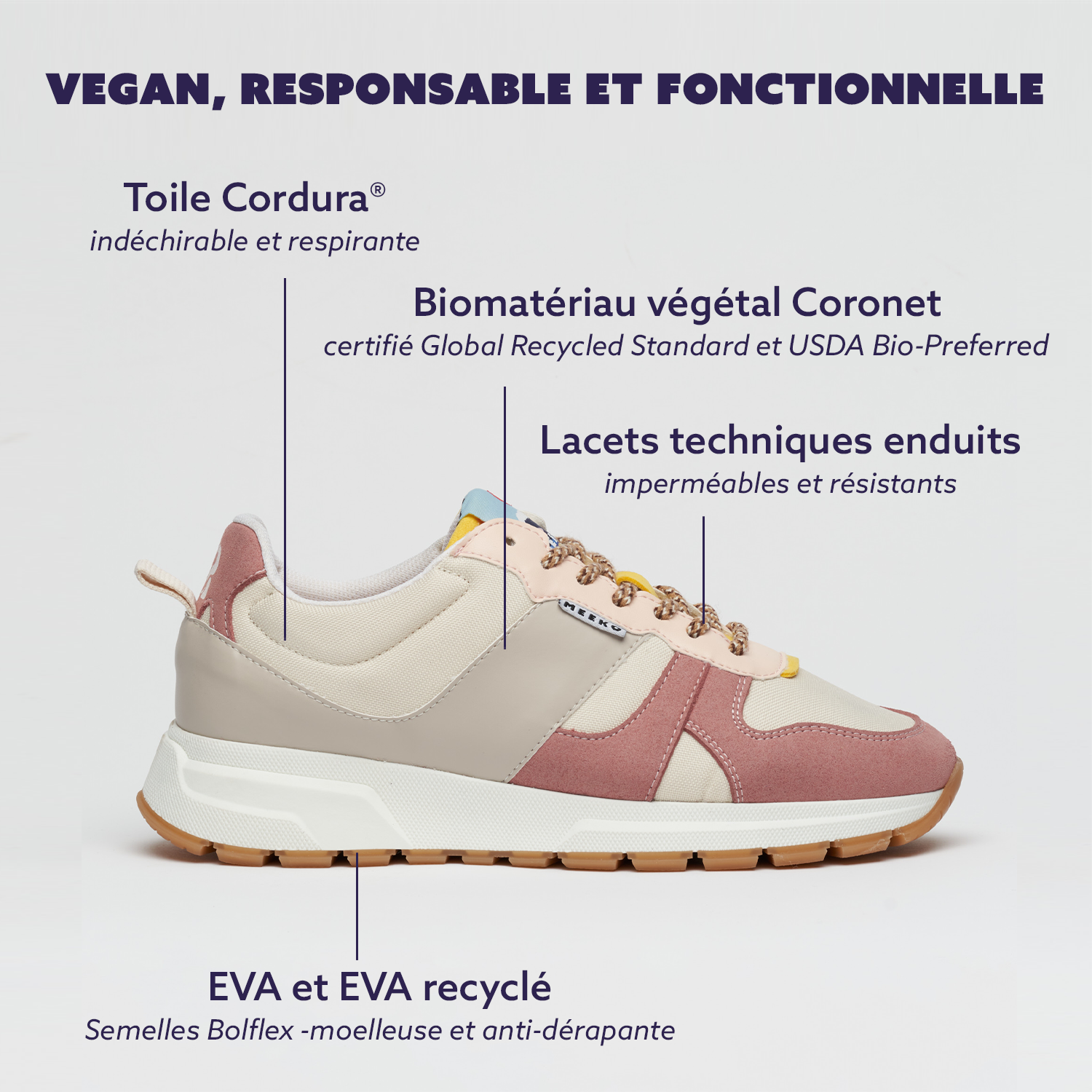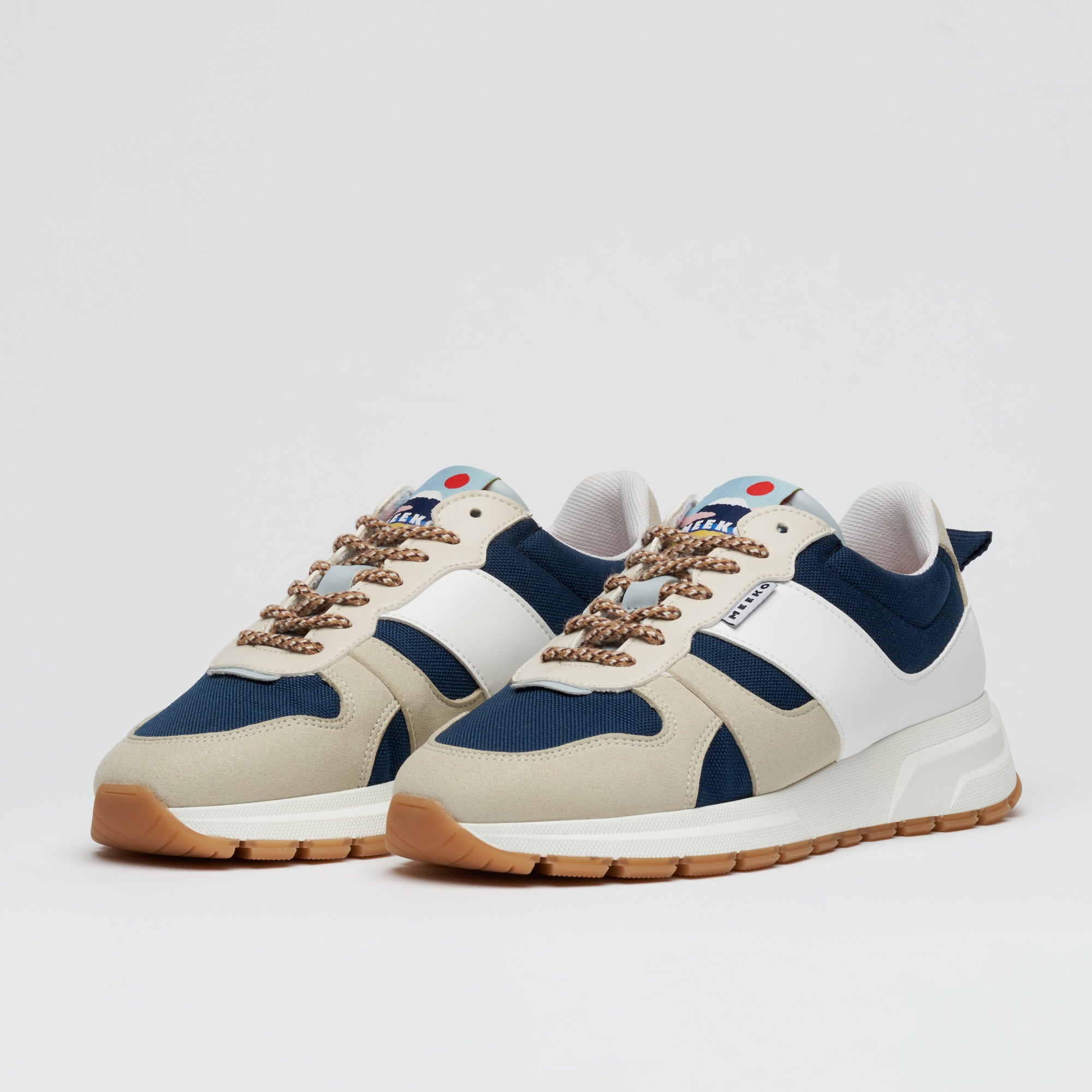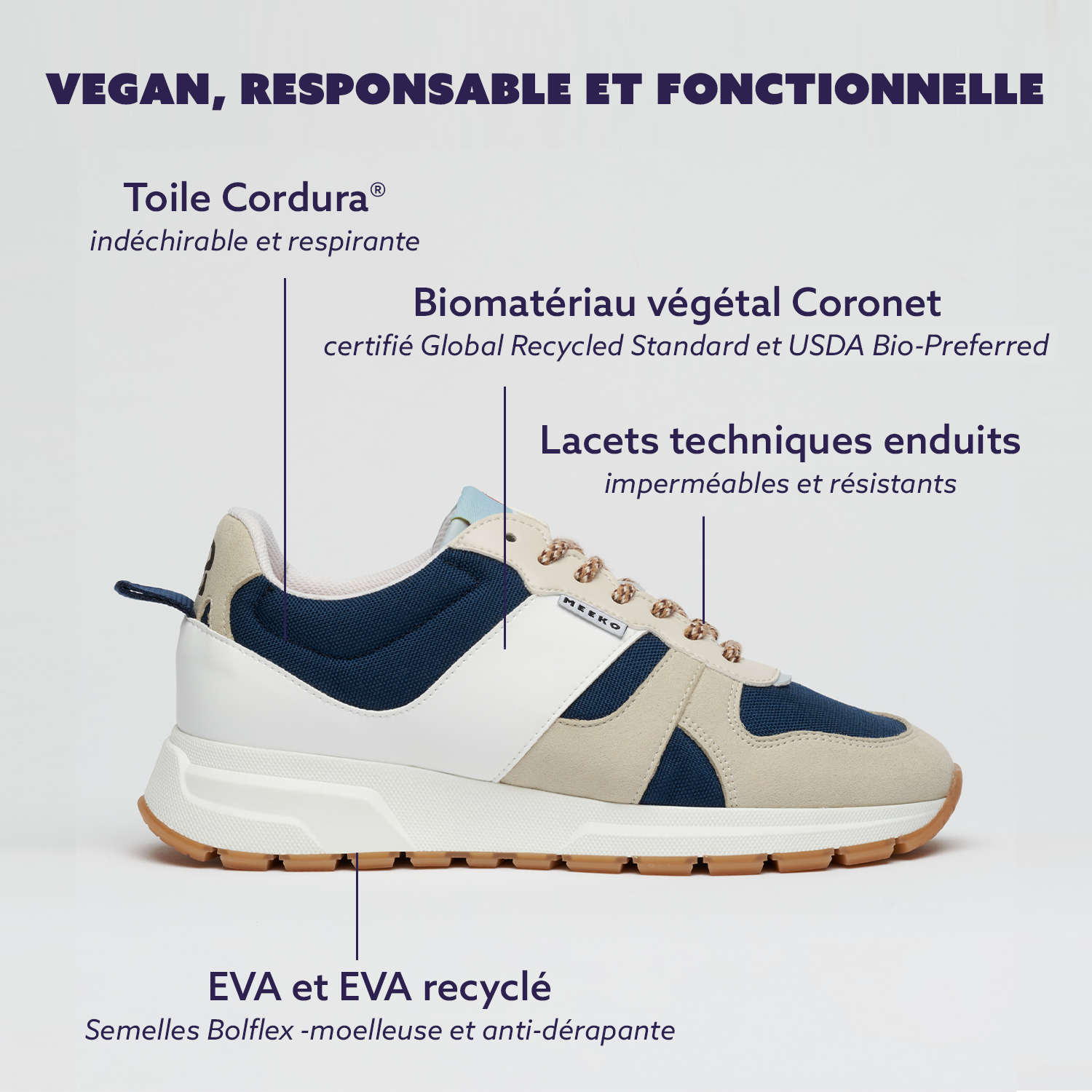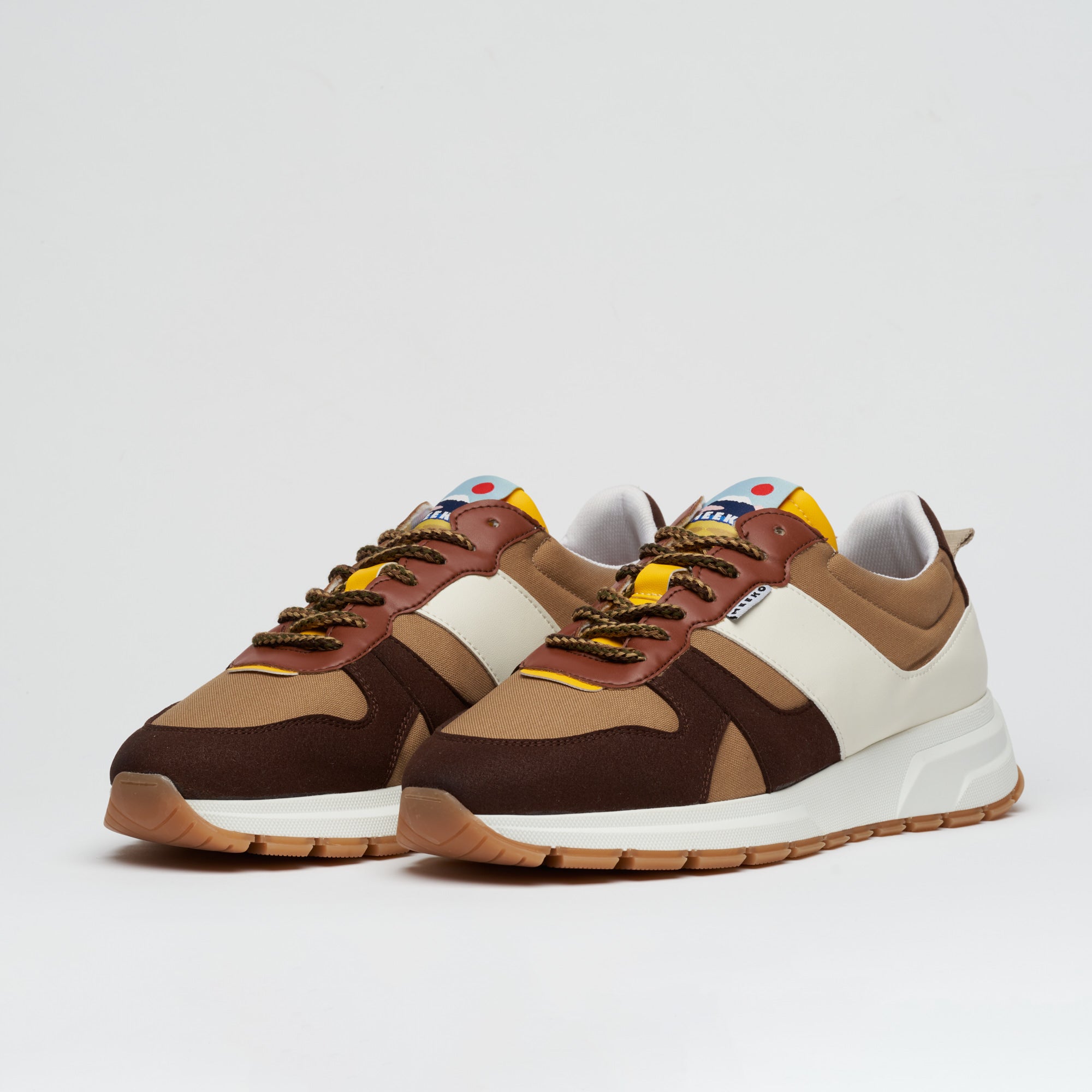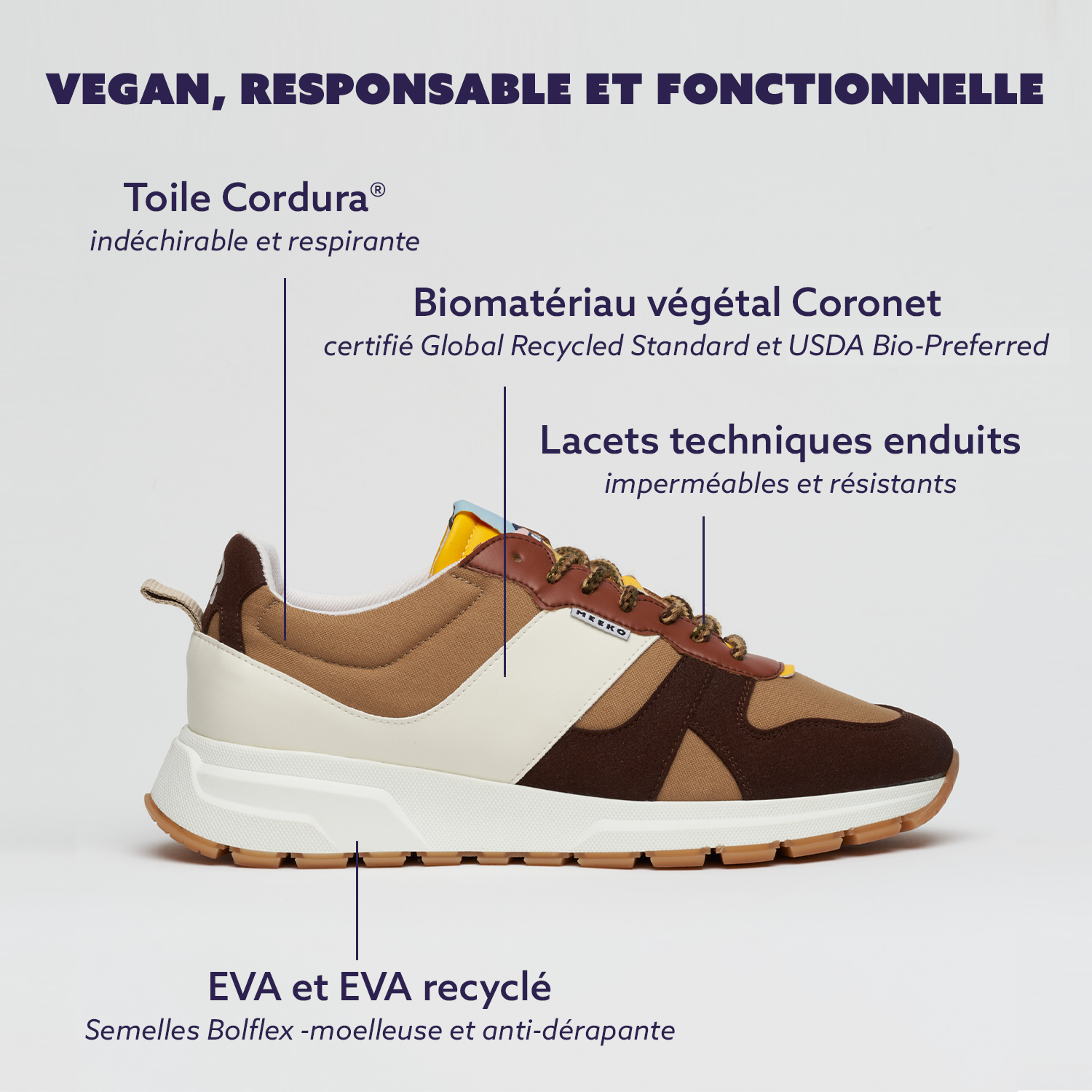Biodiversity: The next frontier of sustainable fashion
It is time for the clothing industry to drastically reduce its contribution to biodiversity loss. Here are four interventions that can have a huge impact.
Even amid the COVID-19 pandemic, sustainability remains a priority for consumers, investors and regulators – in fact, commitment to sustainability has grown stronger during the crisis. For example, two-thirds of clothing shoppers say limiting the impact on climate change is more important to them now than before COVID-19.
But while much has been written about the fashion industry's impact on climate change , the industry's heavy footprint on biodiversity is less known and less well covered. Broadly defined as the variety of all life forms on earth, biodiversity is important. We depend on it for our food and energy, and for its irreplaceable role in maintaining air quality, freshwater and soil supplies, and climate regulation. And yet, biodiversity is declining at a faster rate than ever before in human history. One million species, or between 12 and 20% of the estimated total number of species, marine and terrestrial, are threatened with extinction.
The clothing industry contributes significantly to the loss of biodiversity. Clothing supply chains are directly linked to land degradation, the conversion of natural ecosystems and the pollution of waterways.
This article examines the main drivers of biodiversity loss in the apparel industry, how companies can strategically mitigate this loss, and what brands can do to boldly lead the industry's biodiversity efforts. .
The contribution of clothing to biodiversity loss
For several years, companies in the clothing sector have been actively involved in the fight against climate change, launching a myriad of initiatives to become carbon neutral. Biodiversity is a separate but related issue. Biodiversity loss and climate change are interdependent and mutually reinforcing – one accelerates the other, and vice versa. For example, protecting forests could help reduce greenhouse gas emissions. In turn, rising global temperatures increase the risk of species extinction.
Given that biodiversity is a complex and multi-dimensional landscape and that the degradation of ecosystems is very widespread (it affects oceans, fresh water, soils and forests), many parameters and indicators are needed to measure the impact. and progress. Setting targets and reporting on such a complex range is much more difficult than managing the measurement of greenhouse gas emissions alone.
Through their analysis of quantitative impact indicators and interviews with industry experts, McKinsey was able to understand how each part of the apparel value chain affects biodiversity. Most negative impacts come from three stages of the value chain: raw material production, material preparation and processing, and end of life (Table 1).


Based on their analysis, they identified the five largest contributors from the apparel sector to biodiversity loss. They are presented according to the fashion value chain, not the scale of impact:
- Cotton farming. Cotton is the most used non-synthetic fiber in the world. Its cultivation is particularly intensive in insecticides and pesticides: although cotton grows on only 2.4% of the cultivated land in the world, it accounts for 22.5% of the world's use of insecticides - more than any other crop. - and 10% of the total use of pesticides. Cotton is also a water-intensive crop; according to some estimates, it takes 2,700 liters of water to produce one T-shirt.
- Natural wood-based fibers/man-made cellulose fibers (MMCF). MMCFs are created from cellulose, primarily derived from wood. It is estimated that more than 150 million trees are felled each year to produce synthetic cellulose fibers. While the majority of synthetic cellulose fibers come from certified, sustainable tree plantations, up to 30% of synthetic cellulose fibers can come from primary and endangered forests. In addition, water and soil pollution from chemicals used in forest plantations and during pulp processing leads to loss of habitats and endangers species, unless the process is 100% closed circuit.
- Textile dyeing and processing. About 25% of industrial water pollution comes from the dyeing and processing of textiles. These processes overuse freshwater resources and contaminate waterways through the runoff of chemicals and non-biodegradable liquid waste. Of the 1,900 chemicals used in the production of clothing, the European Union classifies 165 as hazardous to health or the environment.
- Microplastics . A standard load of laundry releases an average of 700,000 fibers, and half a million tons of microfibers (which are a type of microplastic) end up in the oceans every year. An estimated 35% of primary microplastics in oceans around the world come from the washing of synthetic textiles. The toxic chemicals in synthetic microfibers poison marine life.
- Waste. Only 12% of textile waste is recycled (broken down into its components), and less than 1% is recycled in a closed circuit. Nearly three-quarters (73%) of textile waste is incinerated or ends up in landfills, which release pollutants into their environment and contribute to habitat loss. Between 30 and 300 species per hectare can be lost during the development of a single landfill.
Clothing supply chains are directly linked to land degradation, the conversion of natural ecosystems and the pollution of waterways.
These statistics are sobering. For the apparel sector to slow global biodiversity loss, a step change from the status quo will be needed.
Four focus areas
The good news is that apparel companies have started to take notice of this issue and they have the power to shake things up. While apparel companies can take many actions that are likely to be relevant and synergistic, with every action comes trade-offs. Based on their analysis, apparel companies would do well to prioritize the following high-impact strategic interventions:
1. Develop innovative materials and processes
There is no perfect material. As we have seen, each of the most commonly used materials in the clothing industry (cotton, synthetic fibers and polyamide staple fibers) has a negative impact on biodiversity. But each of them can be made more durable. Also, better alternatives exist and could improve dramatically with more investment and innovation.
Improving the sustainability of cotton, MMCF and synthetic materials
The agricultural techniques used to produce the raw materials have a significant effect on biodiversity.
Several technologies already available today – precision agriculture, integrated pest management (IPM) and micro-irrigation – reduce the intensity of water and chemical use to some extent. A broader evolution including organic farming and even regenerative farming could go further. But as we mentioned earlier, there are trade-offs.
Organic farming limits the use of fertilizers and crop protection chemicals. It has also been shown that, depending on the location, it uses up to 90% less blue water (precipitation that enters water bodies, the main source of water used for irrigation purposes) . Regenerative techniques, whether organic or not, have shown their ability to restore soil micronutrients over time.
It is unlikely that organic cotton production can be achieved on a large scale and achieve the efficiency of conventional systems. Currently, its market share is only one percent of the total cotton market. It typically yields 15 to 25 percent lower yields and exhibits greater volatility over the production cycle. In addition, converting agricultural production systems to organic farming is a challenge, especially for small farms, as the conversion process can take up to three years.
To find a scalable solution, the apparel industry needs to think about how to optimize the environmental footprint of global cotton production. To do this, it will be necessary to support several production systems that reconcile efficiency, environmental management and the needs of farmers and which, together, must also meet the requirements of end customers.
As for MMCF, many brands already source from plantations certified by the Forest Stewardship Council (FSC) and the Program for the Endorsement of Forest Certification (PEFC). As for synthetics, some brands are reducing their use of fossil fuel synthetics in favor of sustainably sourced natural fibers, recycled PET, or bio-based synthetics. However, these alternatives have limitations. For example, bio-based synthetics break down into acid in water, which contributes to ocean acidification. Recycled fibers are technically complex to produce. And since FCMs and synthetics are by-products of other industries (like the pulp and paper industry or the oil industry), clothing manufacturers have less influence over how these materials are produced.
Invest in textile innovation
Research and development in materials innovation has resulted in many lower impact alternatives to conventional fibers. Lyocell, a cellulose fiber made from gum trees, and Spinnova, made from wood pulp and agricultural waste, rely on closed-loop or chemical-free approaches. Biodegradable polyesters and biopolyesters are made from natural, non-synthetic materials such as starch or cellulose. Recycled fibers not only make it possible to reuse waste, but also reduce the ecological footprint of virgin fibers.
Increasing the commercial availability of these innovative fibers will require investment. Economies of scale should bring prices down, but these newer materials are likely to remain expensive and only used by designers concerned with sustainability. For recycled fibers, scaling up will depend on whether they can be made more robust and less prone to erosion so they don't contribute to microplastic pollution, and whether textile recycling is viable. mixed.
In the absence of effective regulation, pollution of waterways from textile dyeing and processing demands a tougher stance from clothing brands.
2. Take an aggressive stance against waterway pollution
In the absence of effective regulation, pollution of waterways from textile dyeing and processing demands a tougher stance from clothing brands.
Since many suppliers in developing countries lack the resources and knowledge to control and track the chemicals they use, brands need to engage with suppliers through education, targeted investments and stronger accountability to establish baseline certification standards at scale. At a minimum, suppliers must comply with the “Zero Discharge of Hazardous Chemicals” standard, the Manufacturing Prohibited Substances List (ZDHC MRSL) and the Wastewater Directives, which regulate the use of hazardous chemicals and discharge of wastewater.
Once the standards are in place, brands and suppliers can look for high-tech options to reduce non-biodegradable waste. These include moving from wet processing to waterless dyeing, which uses supercritical carbon dioxide, or digital printing, which reduces reliance on water and chemicals. For example, Dutch company DyeCoo's waterless dyeing technology saves 32 million liters of water and 160 tonnes of process chemicals per year. Advanced wastewater treatment technologies, such as reverse osmosis water purification, are also very efficient, with a recovery rate of approximately 90% and the ability to reuse treated wastewater in a loop system. farm. Additionally, apparel companies can switch to greener chemicals (such as plant-based lubricants instead of mineral oils) or natural dyes, which generate less effluent.
Most of these technologies are well established. The main obstacle is their higher cost. For example, DyeCoo's waterless dyeing machine costs between $2.5 and $4 million. Apparel brands need to think about how to work with suppliers and possibly local governments to fund long-term investments in cleaner technologies.
3. Lead the way in consumer education and empowerment
Brands can help to better inform consumers about what they can do to minimize the impact of their actions on biodiversity loss. Simple behavioral adjustments and consumption choices can have substantial results. For example, simply doing laundry differently – more specifically, in the following way – can have a big impact.
- Wash in cold water. Laundering synthetic clothing releases microplastics into the water system; the more water used, the more friction there is between the clothes and the more microplastics are released. By switching from a delicate cycle to an express cold cycle, the rejection of microfibers can be reduced by 57%.
- Filter the microfibers. Consumers can install microfiber filters in their washing machines to prevent microfibers from entering waterways. An even cheaper solution is to use fiber collection bags, which are basically specialized laundry bags that can catch 90-99% of microfibers before they enter water systems.
- Use water-efficient washing machines. Consumers can also pay attention to water efficiency when purchasing a washing machine. In the commercial sector, waterless – or nearly waterless – washing machines can save up to 80% of the water used by traditional machines, while limiting the release of microplastics.
Another way consumers can have a disproportionate positive impact on biodiversity is to use more of the clothes they already own. Using a garment nine months longer can reduce the CO2 emissions associated with it by 27%, its water consumption by 33% and its waste by 22%.
Additionally, consumers can reduce waste by repairing, recycling and reselling their clothes. Campaigns by retailers like H&M, which accepts clothes from any brand for recycling, are gaining popularity. Brands have tremendous influence in marketing such initiatives, ensuring they appeal to consumers, and changing consumer mindsets and behaviors.
In addition to helping raise consumer awareness, brands can encourage behavioral change, for example by offering small vouchers in exchange for used clothing. The industry can push further by providing viable business models for repair and reuse, as Patagonia did in 2019, when its Worn Wear program repaired more than 40,000 garments.
4. Relentlessly pursue zero waste
One of the most important changes the clothing industry can make in the interest of biodiversity is to simply stop making too many clothes. The average overproduction is estimated at around 20%. Manufacturers recycle approximately 75% of pre-consumer textile waste. But the remaining 25% mostly end up in landfills or are incinerated, never having been worn, although some of them can be donated.
Demonstrate bold leadership
The general steps apparel companies can take to help transform sustainability in the industry are well known. But if the sector is to make measurable and meaningful progress on biodiversity, companies must show leadership in the following ways:
- Manage biodiversity as they manage the creation of value. Consider biodiversity impact in financial reporting – for example, through impact-weighted accounts or environmental profit and loss approaches – and manage it as financial performance. Let's commit to the next science-based biodiversity targets to further channel internal investments related to sustainability.
- Changing the paradigm of supplier engagement. Upstream biodiversity interventions are complex and can often have associated costs. Collaborate with other brands to set common standards for suppliers. Suppliers will benefit from lower operational complexity and economies of scale, while brands can push for tighter specifications rather than watering them down to the lowest common denominator.
- Invest in the broader ecosystem to accelerate and scale innovation. Let's team up with other apparel companies to invest in the scale and industrialization of emerging low-impact technologies and alternatives to non-synthetic fibers. With a multitude of viable options on the market, the priority should be to focus investments to establish new dominant materials and processes.
- Encourage change in adjacent and relevant industries. The clothing sector is closely linked to agriculture, livestock and the chemical industry; all of these sectors face similar challenges in terms of their biodiversity footprint. Stimulating closer cross-sectoral collaboration through working groups and round tables will be mutually beneficial for all participants.
- Engage with policy makers and welcome regulations. Let's be proactive by engaging in meaningful biodiversity regulation. Existing regulations, such as the EU Single-Use Plastics Directive or Extended Producer Responsibility schemes (for product disposal/recycling), have helped make sustainability a shared responsibility.
We believe that biodiversity will become an even greater concern for consumers and investors in the years to come. COVID-19, instead of slowing the trend, has accelerated it – perhaps because people now understand more deeply that human and animal ecosystems are interdependent. It is time for the clothing industry, which until now has been a major contributor to biodiversity loss, to take bold steps in the opposite direction.
